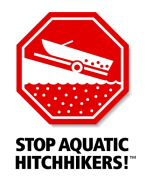
Vermont waterways are under attack by a number of nonnative invasive species of plants and animals. Eurasian water milfoil has been confirmed in 68 bodies of water in the state. Last year control and spread prevention projects were funded by the State at a total cost of $378,680 which represented 25% of the annual Vermont motorboat registration receipts in addition to federal funds. Grant-in-Aid grants were awarded to 31 municipalities including the Town of Barton.
Nonnative invasive species are not part of the natural food chain and may grow out of control. Plant species can form dense vegetation which can make swimming, fishing and boating very unpleasant or nearly impossible. Once they gain a foothold, the only potential remedies are harvesting to reduce the amount of vegetation or in rare instances, treating an entire lake or pond to kill the invasive vegetation.
Crystal Lake continues to have excellent water quality although not without some oversight and ongoing efforts. Small groups of Eurasian water milfoil plants have been present in Crystal Lake for many years and are monitored and handpicked by trained State sanctioned divers. This program has at least temporarily eradicated plants at the north end of the lake but small numbers of plants are still present at the south end near the State boat launch. Diver surveys are conducted each season to monitor for any new growth and to harvest plants where they are known to exist.
In addition to the diver surveys, there is a seasonal “greeter program” at the State boat launch which runs from Memorial Day through Labor Day daily from 6am to 6pm. State educated “greeters” check each boat and trailer for hitch hiker plants which represent a serious threat for potential infestation. Last year there were 848 inspections with 11 interceptions of visible plant material and of those, 3 had Eurasian water milfoil. Each of these could cause serious problems. Kayaks and canoes may also carry plant material and represent a unique problem as they can be launched anywhere along the shore and users are often unaware of the potential risk.
There is a known infestation of Eurasian water milfoil plants at the outlet of the lake at the north end adjacent to the State Beach. The relatively strong current has prevented spread of these plants into the lake but the density of plants has increased over the last several years and this is an increasing concern. The divers inspect and hand pull plants in this area during their surveys. This area is also monitored by staff from the Vermont Aquatic Invasive Species Management Division of the Department of Environmental Conservation who offer control assistance with hand pulling. Because of ongoing concern in this area, volunteers from the Crystal Lake Preservation Association have been trained by staff of the Aquatic Invasive Species Management Division and are participating in hand pulling as well. These efforts have shown promising initial results but ongoing activity will be required for the foreseeable future.
The cost of these programs is considerable but the cost of doing nothing is not tenable. The State Grant-in Aid Program supported the efforts of the Crystal Lake Preservation Association with a grant of $8,700 and the Town of Barton generously awarded a tax appropriation of $10,000. These funds cover the basic costs of the Greeter Program and diver surveys but many individuals from the Crystal Lake Preservation Association give many hours of volunteer time to make it work. We are very appreciative of the support that we receive. Please visit us at crystallakevt.com for more information.
Timothy Brown. President CLPA.
Crystal Lake Preservation Assoc. relies on the generous donations to fight and educate people about the Eurasian Milfoil invasion.
$20, $50, $100..
